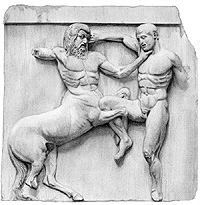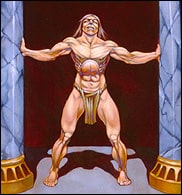Recently being instructed in long gun use in Wyoming, I was told that the younger men made better marksmen, as the older fellows toiled at maintaining their long range accuracy by making adjustments to compensate for their deteriorating eye sight. Such sight requirements don’t plague the hand-to-hand fighter. One of the best wrestler-boxers I have ever known only saw shadows.
The list of relatively age-resistant attributes for the fighter is barely shorter than those more fleeting abilities and is more progressive and developmental as opposed to preexisting. It is my opinion that the arts on either end of the hand-to-hand spectrum—being grappling and the use of blades as long, or longer, than the arm—permit older fellows to stay competitive longer, then the higher speed, higher energy striking arts like boxing, kick-boxing, stick-fighting and knife-fighting. Additionally, any combat form with a wider range of resolutions—such as MMA—is kinder to the experienced fighter and less so to the inexperienced, so tend to offset some of the advantages of youth.
Note that strength sports—such as The World’s Strongest Man contest—that require calculation, permit strength athletes to stay competitive longer than boxing, which favors reaction time so heavily.
It seems, from the perspective of the aging cynic, that so many dueling traditions—traditions upheld by the consensus of older men—rely on the use of the sword, precisely because this weapon favors the late-blooming and lasting attributes of the fighter.
Abilities that Favor Experience over Youth
Listed in interplay order
1. Leverage [position]
2. Rhythm [sympathetic motion]
3. Time [breaking rhythm, unsympathetic motion] *B
4. Measure [range sense]
5. Relaxation [accounts for what stamina, unfit older fighters retain, amplifies form and minimizes damage sustained from impact and exertion]
6. Tactile sense [determining leverage through touch, the key attribute in Chinese boxing]
7. Angulation [oblique contact sense, the key attribute in knife fighting]
8. Form [most efficient technique, the key attribute in karate and swordsmanship] *C
9. Functional power [dependent on all of above, the key “game-changing” attribute in stick-fighting and boxing]
Notes
*A. 1-5 are the baseline attributes one must develop to excel in 6-9, where you begin to see stylistic branching in how the top attributes are regarded by practitioners of different arts, and within an art, by different fighters.
*B. Note how cruel combat must be for the fighter who stops progressing at Stage 2.
*C. With longer blades imperfection is largely unforgiven. Do note that most Asian-based striking systems place form as the highest valuation, an indication, I sense, that they are ultimately descended from or imitative of, swordsmanship.
The Punishing Art
Twerps, Goons and Meatshields: The Basics of Full Contact Stick-Fighting











